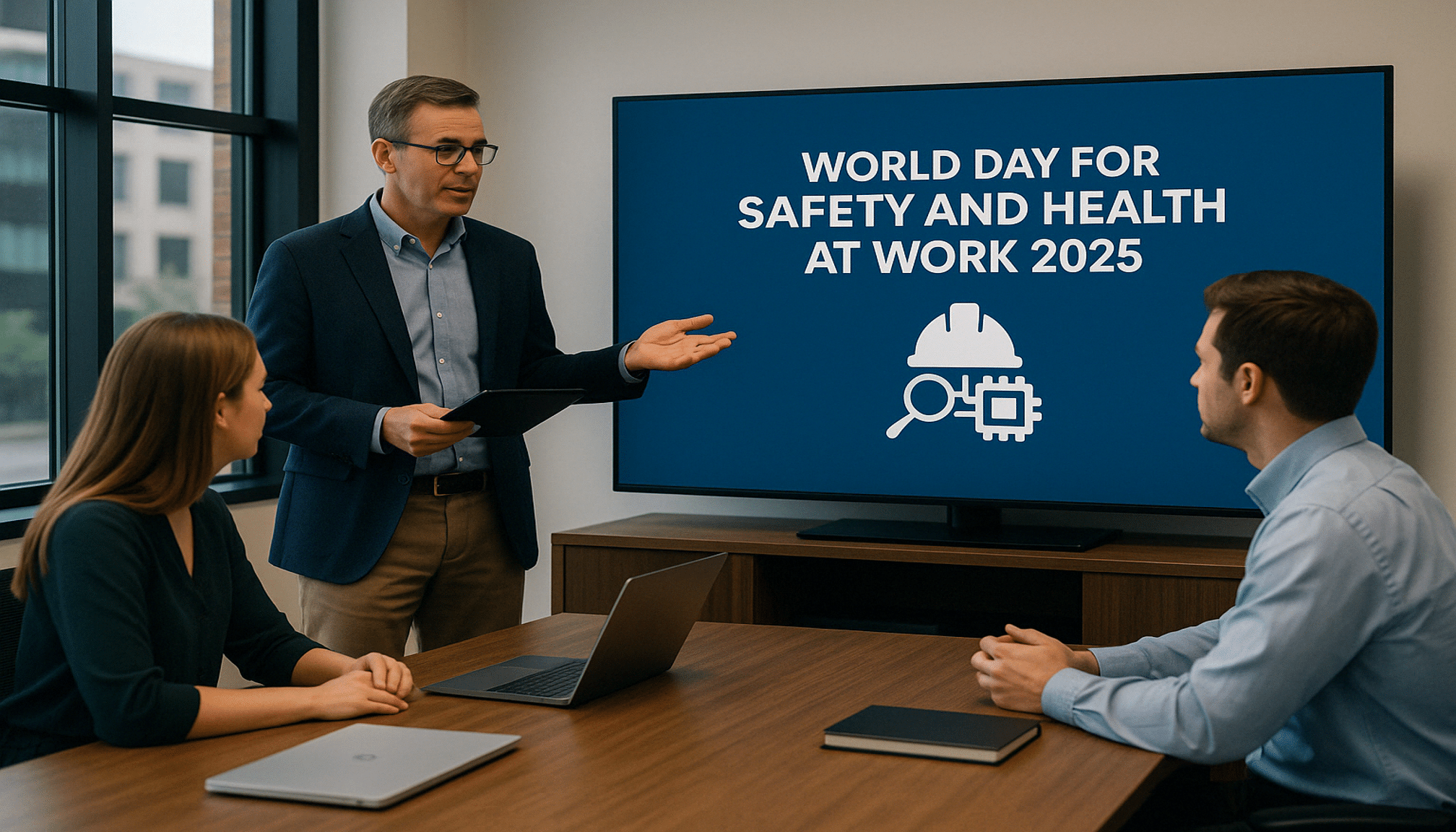
World Safety Day 2025: Essential Guide to Safety and Health at Work
Discover how to PROMOTE SAFETY AND HEALTH AT WORK on WORLD DAY FOR SAFETY 2025. Get the ILO theme, key dates, and ideas for events on 28 April.
Last Updated on 06/10/2025
Every year on 28 April, the World Day for Safety and Health at Work shines a light on the importance of creating safe and healthy workplaces. For 2025, the focus is sharper than ever—because the way we work is changing fast. From AI to automation, technology is transforming jobs, and with that comes new opportunities and risks for workplace safety. Here’s what to know and how to take action this year.
When is World Safety Day 2025 and what’s the theme?
World Safety Day 2025 takes place on 28 April. This year’s theme, chosen by the International Labour Organization (ILO), focuses on how AI and digital technologies are changing workplace safety. While tech like sensors and automation can help prevent accidents, it’s just as important to manage new risks like screen fatigue, constant notifications, and blurred work-life boundaries.
World Day for Safety: Date and Theme
Mark your calendar: 28 April is World Day for Safety and Health at Work. Set by the ILO, this annual event encourages action around the globe to improve working conditions. In 2025, the theme looks at how digital tools and AI are transforming safety—by spotting risks early, reducing physical strain, and even monitoring air quality or fatigue.
But these tools don’t work on their own. Without good policies and planning, they can actually increase pressure, reduce personal control, or overlook mental health issues. That’s why this year’s focus is on using tech thoughtfully—making work safer, not just more automated.
Whether you’re an HR manager, team leader, or just someone who wants a better workplace, this day is a great opportunity to pause, reflect, and plan for improvements.
Implementing Safety and Health at Work
Making your workplace safer doesn’t require high-tech systems. It starts with everyday steps: checking your space for risks, listening to employee feedback, and building a culture where people feel safe to speak up. Technology can help—but it’s not a magic fix.
Think about posture, lighting, screen time, noise, and mental health. Use tools like this warehouse and safety solutions guide to help you identify areas for improvement.
And don’t forget training: whether it’s how to lift heavy items, work with machinery, or handle digital overload, everyone should know the basics.
Ways to Observe World Safety Day
- Host a safety workshop that helps teams spot risks and understand how technology can both help and harm.
- Create visual reminders—posters, checklists, or even digital screens with safety tips relevant to your workplace.
- Run a campaign that explains the real safety risks of digital work, like burnout or working without breaks.
- Invite a guest speaker, such as a health and safety expert or mental wellness coach, to share insights.
- Encourage teams to report issues or near misses—and reward them for speaking up.
- Use a safety checklist to review equipment and office layout—especially if people are working in hybrid setups.
- Host a lunch or coffee break with a clear safety theme—even simple conversations can start real change.
Conclusion
World Safety Day 2025 is a chance to rethink how we protect people at work—not just physically, but mentally and emotionally too. With technology playing a bigger role, we need to make sure safety stays a priority, not an afterthought.
At Viking, we’re here to support you with tools, resources, and ideas to help you build a safer, more supportive environment for everyone. From safety gear to smarter setups, we’ve got your back.
Frequently Asked Questions
What is the purpose of World Safety Day 2025?
The goal is to raise awareness and promote action around workplace safety, with a special focus in 2025 on how digital tools and AI are changing the landscape of occupational health and safety.
How can organisations observe World Safety Day 2025?
Run events, share safety tips, update your tools or equipment, and most importantly—listen to your teams. Even small steps can make a big difference.
Who sets the theme for World Safety Day?
The International Labour Organization (ILO) sets the theme each year. They work globally to improve working conditions and guide governments and businesses on how to keep people safe at work.
Can technology improve workplace safety?
Yes—when used the right way. Sensors, smart tools, and data can prevent accidents and improve working conditions. But it’s also important to manage the downsides, like stress or lack of privacy.




